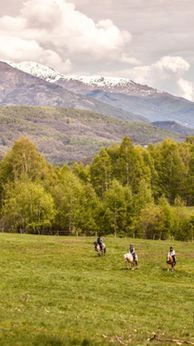
AROUNd pembrokeshire
Rated by National Geographic magazine experts as the second best coastline in the World. With 186 miles of magnificent and varied coastline and over 50 beaches, there’s plenty of space for everyone. Choose between lively Tenby and Saundersfoot or peaceful St Davids and Newport. Perfect for outdoor activities or just relaxing.
PEMBROKSHIRE COAST PATH
The Pembrokeshire Coast Path (Welsh: Llwybr Arfordir Sir Benfro), often called the Pembrokeshire Coastal Path, is a designated National Trail in Pembrokeshire, southwest Wales.
Established in 1970, it is a 186-mile (299 km) long-distance walking route, mostly at cliff-top level, with a total of 35,000 feet (11,000 m) of ascent and descent. At its highest point – Pen yr afr, on Cemaes Head – it reaches a height of 574 feet (175 m), and at its lowest point – Sandy Haven crossing, near Milford Haven – it is just 6 feet (2 m) above low water. Whilst most of the coastline faces west, it offers – at varying points – coastal views in every direction of the compass.
The southern end of the path is at Amroth, Pembrokeshire. The northern end is often regarded as being at Poppit Sands, near St. Dogmaels, Pembrokeshire, where the official plaque was originally sited but the path now continues to St. Dogmaels, where a new marker was unveiled in July 2009. Here the path links with the Ceredigion Coast Path, which continues northwards.
PEMBROKE CASTLE
Pembroke Castle (Welsh: Castell Penfro) is a medieval castle in the centre of Pembroke, Pembrokeshire in Wales. The castle was the original family seat of the Earldom of Pembroke. A Grade I listed building since 1951, it underwent major restoration during the early 20th century.
In 1093, Arnulf of Montgomery built the first castle at the site when he fortified the promontory beside the Pembroke River during the Norman invasion of Wales. A century later, the castle was given by Richard I to William Marshal, who became one of the most powerful men in 12th-century Britain. He rebuilt Pembroke Castle in stone, creating most of the structure that remains today.
The castle is open to the public and is the largest privately-owned castle in Wales.
OAKWOOD
Oakwood Theme Park is a theme park in Pembrokeshire, Wales.
Oakwood opened in the late 1980s as a very small family park with BMXs, a wooden fort, a 3D-style cinema experience show, go-karts and a water chute ride. The park later incorporated four large thrill rides: Megafobia (1996), Vertigo (1997), Drenched (2002, as Hydro) and Speed (2006) which was a Gerstlauer Euro-Fighter roller coaster with a 97-degree drop. It was the first Euro-Fighter in the United Kingdom and was at that time the steepest roller coaster in the UK . The 85-foot-tall (26 m) CCI-built wooden roller coaster "Megafobia" was rated by enthusiasts soon after its installation as amongst the best in Europe. In 2016 it celebrated 20 years at Oakwood.
FOLLY FARM
The Folly Farm Adventure Park and Zoo (also known as Folly Farm), situated to the north of Saundersfoot and Tenby in Pembrokeshire, is a visitor attraction in Wales with around 500,000 visitors each year. Initially a farm attraction, the park is now also home to an indoor vintage funfair, a zoo with over 200 different species of animal and extensive indoor and outdoor adventure play areas.
The original farm has expanded and now covers a significant part of the park including a large undercover Jolly Barn area featuring horses, goats, sheep, pigs and smaller petting animals. Folly Farm is made up of four areas: a farmyard; a zoo; an undercover vintage funfair, including a Wurlitzer organ; There is a daily timetable of "meet-and-greet" sessions and visitors may hand-milk goats at certain times of the day. The park has expanded to the other side of the A478 road where more animals can be found in outdoor paddocks. A tractor-driven land-train ride touring the outdoor paddocks, operates between late-morning and mid-afternoon.









